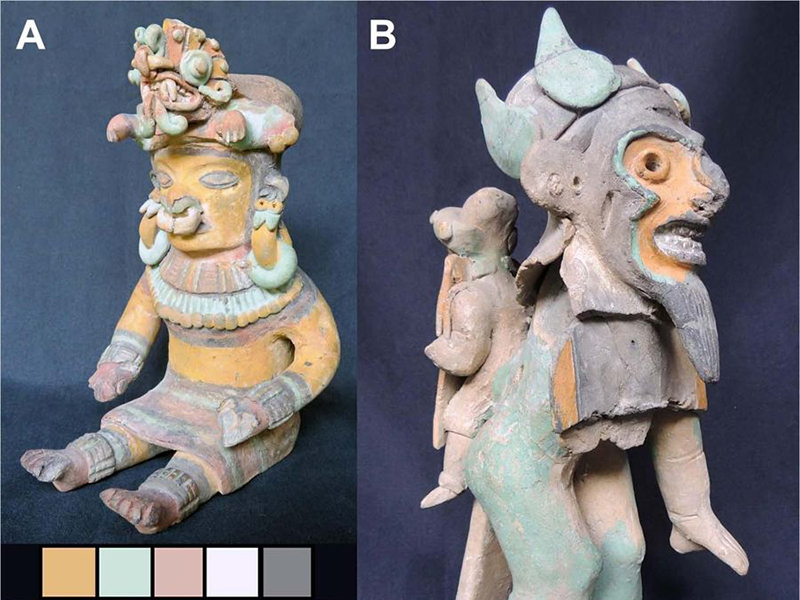Pre-Columbian art and nanotechnology

In a scientific publication members of the School of Physical Sciences and Nanotechnology expand the use of nanotechnology techniques to national archeology.
February 28, 2019
Art is the instrument that allows for a vision of the world to be materialized and allows us to get involved in the idea of posterity. Therefore, art pieces of civilization are key pieces to understand the philosophical and social principles that governed its inhabitants. In Ecuador, pre-Columbian art has been a tool that has allowed academics to understand this precisely, although there’s still more to be deciphered. For seven researchers, all from different disciplines, collaborating in e scientific publication “An Archaeometric Characterization of Ecuadorian Pottery”, research of ancient art requires an interdisciplinary approach.
The scientific publication, published in Scientific Reports, by Nature Journals, had the participation of Sarah Briceño, Ph.D., Duncan J. Mowbray, Ph.D., Camilo Zamora-Ledezma, Ph.D., all faculty members of the School of Physical Sciences and Nanotechnology of Yachay Tech, and student Alex Jamett, of the same school. Their research was done in collaboration with researchers from the Alabado Museum, Escuela Politécnica Nacional and Escuela Politécnica del Ejército. The project consisted of using techniques such as raman spectroscopy, infrared and microscopy to perform the evaluation and characterization of 11 pre-Columbian samples that mainly belonged to the Jama-Coaque culture. This characterization was done to identify the pigments used in the pieces.
The discipline that encompasses the techniques used in research is known as Archaeometry. For Alex Jamett, Yachay Tech student who participated in the study, the most valuable thing to venture into this type of disciplines is to work with very specialized people in very different areas. For him, conducting this research was an incredible experience, as it allowed him to see different points of view. Alex joined the research with the goal of learning characterization techniques and their applications in real life. From that, he used a computer to analyze all the SEM and TEM images they had obtained from the samples.
This characterization is done on samples that don’t cause any harm to the archaeological figures. Alex Jamett says the samples become almost invisible dust. With these samples, the team was able to do a complete analysis of how the pieces were painted and what element was used. This way, researchers lay the foundations of what types of treatments were performed to the materials that they had access to, in this case, pottery.
Upon completion of the research, the team found that the pigments were primarily iron oxides. However, they also found nanoparticles that probably came from volcanic ash. The findings raise new possibilities of how the Jama-Coaque culture prepared its pigments. The research team is one of the first to obtain data from archaeological samples with these techniques in Ecuador. Alex concludes that the research can open many doors to other researchers to do further studies with their analysis. You can access the publication here.